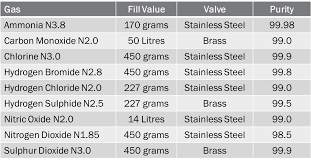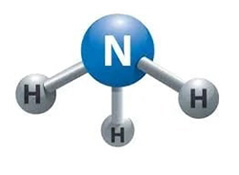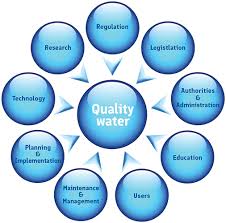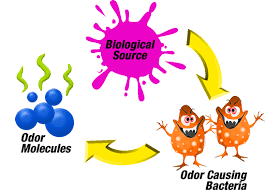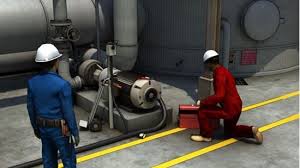Odor control and acid scrubbers are both popular in many industries.
Read More
Topics:
odor control,
water treatment,
biological scrubber,
odor control scrubber,
hydrogen sulfide (H2S),
Chemical Odor,
dissolved gases,
carbon dioxide,
degasifier,
gases,
H2S Degasifier
The type of Odor Control Wet Scrubber selected for the treatment and neutralization of Ammonia (NH3) gases depends on several variables, including the type and source of the ammonia gas and whether or not it is “Free” ammonia and or unionized.
Ammonia is a very miscible and stable molecule with solid hydrogen bonds, making it very soluble in water and difficult to treat without using a properly designed and sized ammonia scrubber. The concentrations, air flow rates, temperature of the gas stream, and chemical reagents being utilized, such as caustic to remove and then treat the ammonia, all play a significant role in the removal efficiency of the ammonia gas scrubber system. Unlike other types of “odor control scrubbers,” an ammonia scrubber is much more sensitive to variables such as the gas stream temperature because of the solubility of ammonia.
Ammonia is produced from nitrogen and hydrogen
the process is called the Haber Process by combining nitrogen with air and adding pressure, you can make ammonia.
It takes about 200 atmospheres of pressure, and the process varies from refinery to refinery. Still, on average, you can only make approximately 15% of ammonia during each pass which takes multiple passes to achieve the 15%. The reaction to make ammonia is exothermic when produced in a refining process.
However, ammonia is also formed in nature in smaller quantities. Most ammonia (90%) is utilized for fertilizer production, but ammonia can be found in food, pharmaceutical products, and cleaning supplies. When ammonia gas is released into the air, it has a very noxious and pungent odor that can be dangerous to inhale, so often, odor control scrubbers are required to capture and treat the ammonia gas.
Read More
Topics:
water treatment issues,
water quality,
degasification,
pH levels of water,
odor control,
water treatment,
advanced treatment solutions,
biological scrubber,
water plant,
odor control scrubber,
hydrogen sulfide (H2S),
Chemical Odor,
pH levels,
Decarbonation,
dissolved gases,
wastewater,
degasifier,
gases,
H2S Degasifier,
Ammonia
The water treatment industry has developed and evolved over the years to continue to find new ways to produce degassed water,
Read More
Topics:
water quality,
degasification,
pH levels of water,
water treatment,
advanced treatment solutions,
water plant,
safety,
hydrogen sulfide (H2S),
Chemical Odor,
media packing,
pH levels,
Decarbonation,
dissolved gases,
wastewater,
Global,
carbon dioxide,
decarbonator,
degasifier,
gases,
RO membrane,
H2S Degasifier,
degassed water
What is the best process for hydrogen sulfide treatment? Biological odor control Scrubber or a Chemical Scrubber?
Most industrial water treatment, municipalities, and private customers are responsible for water and wastewater treatment and often generate "hydrogen sulfide" off-gas odors. Professionals who either provide the design engineering or maintain the water or wastewater collection systems need to address and control "hydrogen sulfide" odors. They often find themselves in a situation where they must select what type of odor control system will perform for their customer or at their location. A chemical odor control scrubber may utilize "chlorine" or "caustic" as a scrubbing agent or just "caustic" alone. Typically, "acids" are not used when treating "hydrogen sulfide" gas, but "acid. " Acid is used when treating other types of off-gases such as ammonia. The application or process, including incorporating "artificial intelligence" into the machinery to provide more rapid responses to operators to predict maintenance and other operational functions—treating process air generated by either a "decarbonation" tower or a "degasification" tower for the removal of "carbon dioxide (CO2) or "hydrogen sulfide (H2S). It is important to understand the basics of either of the processes to allow the design professional to properly select the best type of "odor control" scrubber to utilize and make the decision to either select a chemical scrubber that uses "caustic" or "chlorine" or a biological scrubber for the treatment of the hydrogen sulfide that only requires the use of "caustic" to buffer the recirculation water. In other types of processes involving treatment, such as ion exchange, a design professional or owner must understand that the process may also produce an off-gas that requires treatment. "Ion exchange" can be used as a standalone treatment process to treat hard water utilized as a post-treatment process after reverse osmosis. Regardless of when "ion exchange" is utilized, we recommend removing the carbon dioxide (CO2) before the process to prevent the formation of carbonic "acid" and to extend and save the life of the Ion Exchange resin. It may also be necessary to adjust the pH of the water either pre or post-treatment by injecting either an "acid" solution when lowering the pH or injecting a "caustic" solution when raising the ph. It is important to remember that the efficiency of the process depends on proper pH control.
High pH and hydrogen sulfide will not convert or be removed by “degasification” and the “carbon dioxide” cannot be removed.
Read More
Topics:
odor control,
water treatment,
advanced treatment solutions,
odor control scrubber,
Chemical Odor,
gases,
Biological Odor Control Scrubber,
Biological odor control
Maintaining Water Quality: Key to Effective Chemical Odor Control Treatment Systems
Read More
Topics:
odor control,
calcium carbonate,
Chemical Odor,
media packing,
Langilier index (LSI),
scaling,
chlorine,
caustic
Water treatment towers and storage tanks are high places that require special precautions when entering. While the majority of people who enter these locations for work can be trusted, there are some hazards that make it more important than usual to follow safety procedures.
These locations can get very hot and humid, and can also be filled with harmful chemicals and microorganisms that can cause serious health issues if inhaled or absorbed through the skin. Therefore, the general standard for workplace safety is much higher when entering locations like these.
Make sure you have read and understood the following information about safety when entering a water treatment plant. It will help you understand how to stay safe and protect yourself from harm when entering a water treatment plant. normal installation, maintenance, or even emergency repairs, it is often required to enter into a water treatment tower (degasifier, air stripper, decarbonator, or clear well/ storage tank). When this occurs, full safety protocols should be followed at all times, in accordance with OSHA regulations. A tower or tank B classification is a "Confined Space" location. For more information visit the OSHA confined space regulations page.
In addition, there are other safety risks that an operator or technician can be exposed to while inside these types of closed locations. The risk can come from fumes of hydrogen sulfide (H2S), chlorine from an injection line, or a lack of oxygen O2. A proper confined space permit should be prepared and only technicians with proper training and certifications should enter into these types of confined spaces.
Read More
Topics:
water treatment issues,
water quality,
odor control,
water treatment,
advanced treatment solutions,
biological scrubber,
water plant,
safety,
odor control scrubber,
hydrogen sulfide (H2S),
Chemical Odor,
media packing,
scaling,
caustic,
Safe drinking water,
dissolved gases,
wastewater,
carbon dioxide,
degasifier,
gases,
Ammonia,
what is a scrubber,
Hydrogen Sulfide formula,
Deagasification,
Filter Media,
DeLoach Industries, Inc.,
Drinking Water,
Clean Water,
Contaminated Water,
OSHA
Read More
Topics:
water treatment issues,
water quality,
pH levels of water,
aeration,
water treatment,
advanced treatment solutions,
fiberglass,
About DeLoach Industries,
fabrication,
biological scrubber,
Chemical Odor,
media packing,
pH levels,
Decarbonation,
De-Aeration,
decarbonator,
boiler system,
distillation,
degasifier,
RO system,
H2S Degasifier,
Fish Farming,
Aquaculture,
Pisciculture,
Biological Odor Control Scrubber,
Biological odor control,
removal of CO2 from water,
Deagasification,
decarbonation of water,
Sand filters,
Filter Media,
municipal water systems,
greensand,
DeLoach Industries, Inc.,
Drinking Water
